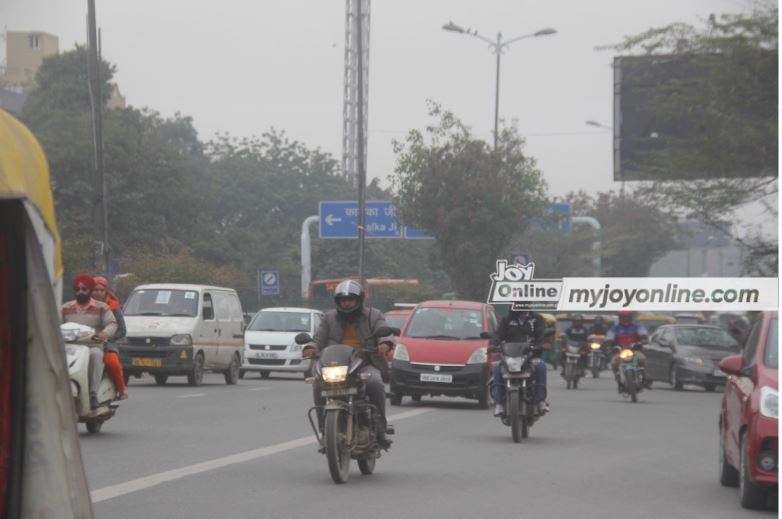On the 242nd day out of the 273 days between January 1 and September 30, 2022, India recorded extreme weather events. This indicates that throughout the course of these nine months, the country had an extreme weather event in one or more of its regions more than 88% of the time.
Over 416,667 houses have been demolished, 2,755 people died, 1.8 million hectares of cropland were damaged, and nearly 70,000 animals perished as a result of these calamities.
According to Rajit Sengupta, associate editor of Down To Earth and one of the writers of the report: “This estimation of loss and damage is probably an underestimate as data for each event – including losses of public property or crop loss — has not been collated or estimated.”

This was found in a fresh analysis by the Centre for Science and Environment (CSE) and Down To Earth magazine, which was announced on Tuesday via an online event. The study offers a thorough summary of India’s experience with extreme weather across a significant portion of the year.
The study also offers a thorough summary of India’s experience with extreme weather across a significant portion of the year.
Madhya Pradesh, a state in Central India had the most days with extreme weather, with an occurrence occurring every other day, but Himachal Pradesh had the most fatalities, 359 in all. Each of the two states of Assam and Madhya Pradesh saw 301 fatalities.
The greatest number of destroyed homes and animal fatalities were reported in Assam, a state in northeastern India. More than half of the country’s cropland was impacted by an extreme weather event that lasted 82 days in Karnataka, a state in the southwestern region of India, accounting for more than 50 per cent of the crop area affected in the country.

According to official data, Madhya Pradesh did not disclose any damage to crop areas. This may be because of “gaps in loss and damage reporting,” according to Sengupta.
At 198 and 195 days respectively, the central and northwestern regions reported the largest number of days with extreme weather events. Central India ranked first in terms of human fatalities with 887, followed by the east and northeast with 783 deaths.
According to the research, January 2022 was the seventh wettest January on record for India since 1901.
Also, the warmest March on record and the third driest in 121 years. The country experienced its third warmest April, 11th warmest August, and eighth warmest September since 1901. The hottest and driest July in 121 years was experienced in eastern and northeastern India. In 2022, the region also recorded its second-warmest August and fourth-warmest September.
Regarding the ‘nature’ of the event, there have been numerous instances of catastrophic weather over the last nine months, including lightning and storms that stretched across 30 states and claimed 773 lives.
The three monsoon months of June through August are marked by heavy to very heavy to exceptionally heavy rainfall in some regions of the nation. This is why no area has been spared by the flood destruction; in Assam, for example, large portions of the state were drowned, resulting in the loss of lives, property, and livelihoods.
However, the impact of the extended high temperatures on people’s well-being in north India, from farmers to construction workers, and how they dealt with the harsh and searing heat are not included in the official data, which shows that heat waves took 45 lives.
There were only two fatalities from cyclones, according to statistics from storms that left 95,066 hectares of land devastated in the nation.
CSE Director General, Sunita Narain said: “This is because of the amazing work done by the India Meteorological Department (IMD) on cyclone forecasting so that there is adequate warning to governments. It is also because state governments – particularly those in Odisha, Andhra Pradesh and West Bengal — have improved their systems of disaster management.”
CSE’s India 2022: An Assessment of Extreme Weather Events report has obtained its information from the IMD and the Disaster Management Division (DMD) of the Union Ministry of Home Affairs, two important Indian government sources. In order to track the incidents, it has also looked via media stories, especially during the pre-monsoon season when official data is hazy.

Kiran Pandey, programme Director of CSE’s Environmental Resources unit and one of the writers of the report said: “While a realistic estimate can be made about the number of days the country recorded extreme weather events from the [India Meteorological Department] IMD releases, major gaps remain when it comes to lose and damage assessment. DMD provides data as received by the states and this is mainly for the monsoon season. It does not all include extreme events, as defined by the IMD.”
The data, according to CSE researchers, is incomplete. They cited media reports that claimed there had been significant crop losses in Gujarat, Rajasthan, Madhya Pradesh, and Haryana during the monsoon season (June to September), however, the DMD’s season-long cumulative loss and damage report assert that there have been no losses in these states.
They stated that assessing crisis situations and their effects are made difficult by the lack of a comprehensive public database on extreme weather events in the country.
“It is clear that now, given the intensity and frequency of these events the country no longer needs to count just the disasters; it needs credible numbers on the losses and damages,” CSE Director General indicated.
She further said: “This is what is the watermark of climate change. It is not about a single event but about the increased frequency of the events – that what we saw as the one in 100 years extreme event has now been compressed to become one in five years or even less. Worse, it is now all coming together – each month is breaking a new record. This, in turn, is breaking the backs of the poorest who are worst impacted and are fast losing their capacities to cope with these repeated and frequent events.”
This is why it’s crucial to comprehend the “extreme weather report card” created by CSE and Down To Earth, according to Sunita Narain. She said the report speaks of the need to do much for managing these catastrophic occurrences — we have to go beyond disaster management to risk reduction and resilience improvement.
“This is why we need more than words to improve the systems for flood management – deliberately building drainage and water recharge systems on the one hand and investing in green spaces and forests so that these sponges of water can be revitalised for the coming storms.”
She added: “This also speaks of the need to demand reparations for the damage from the countries that have contributed to the emissions in the atmosphere and are responsible for this damage. The models that explain the impacts of climate change are clear that extreme weather events will increase in frequency and intensity. This is what we are seeing today. This report card is not good news. But it needs to be read so that we understand the revenge of nature that we are witnessing today and also understand that it will get worse tomorrow if we do not combat climate change at the scale that is needed.”
Along with the study, Down To Earth also unveiled “India’s Atlas on Weather Disasters” a monthly updated public online interactive database on severe weather incidents.





